Table of Contents
*This post may contain affiliate links. As an Amazon Associate we earn from qualifying purchases.
According to the Department of Energy, your HVAC system accounts for around fifty percent of your home energy costs. An energy efficient HVAC system will keep these bills down. If that sounds intimidating, don’t worry. If your system is less than fifteen years old, you probably don’t need to replace it. In fact, there are a number of simple, inexpensive steps you can take to fine-tune your current system, to make sure it’s running as efficiently as possible.
HVAC Equipment: Heating and Cooling Systems
HVAC stands for Heating, Ventilation and Air Conditioning. At the most basic level, your HVAC system consists of the following pieces of HVAC Equipment:
Heating
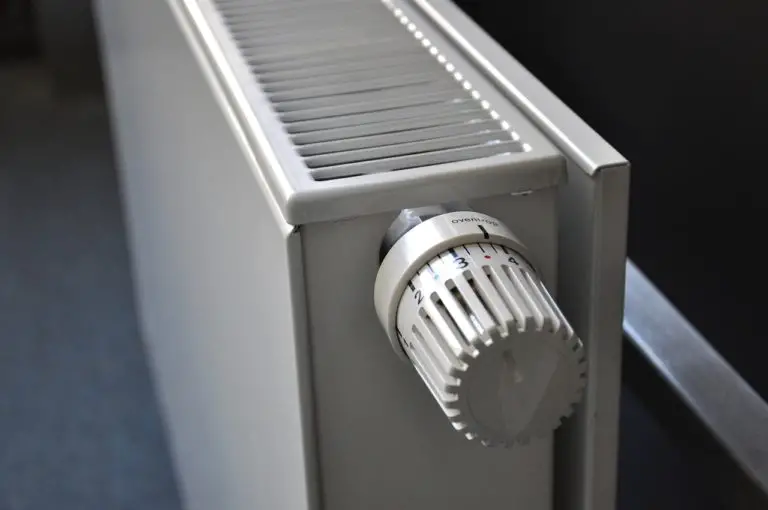
The heating system generates and distributes heat. Most houses have central heating. Central heating systems generate heat at one or more points, then distribute it throughout the building.
Heat Generating Unit:
A heating system uses different devices to create heat. These can be stationary or portable. Also, they can run on any number of different fuels, including electricity, natural gas, and others. The generating unit creates heat in the form of water, steam, or air. Some heat generating devices include boilers, heaters, and heat pumps.
Distribution System:
Once the system generates heat, it can distribute it in a number of ways:
Water and Steam: Water and steam generating systems use pipes to transport heat to the rooms. Hot water boiler heating systems use a circulator (a type of pump). In addition, hot water systems transfer heat to the surrounding air using radiators or hot water coils.
Air: Systems that generate hot air distribute the air through duct systems. Many systems use the same ducts to distribute cold air from an evaporator.
Ventilation
Air quality is another function of your HVAC system. Ventilation means exchanging air with the outside and circulating it inside. The goal of ventilation is to remove one or more of the following: moisture, odors, smoke, heat, dust, airborne bacteria, or carbon dioxide. Additionally, there is the goal of replenishing oxygen.
Forced Air: Forced, or mechanical ventilation regulates and circulates air with an air handling unit. Some examples include bathroom and kitchen extractor fans, and ceiling fans. Also, some of these units may control for temperature and humidity.
Natural Ventilation: Natural ventilation uses an arrangement of windows and vents to allow air flow. It does not depend on mechanical devices to circulate the air.
Cooling
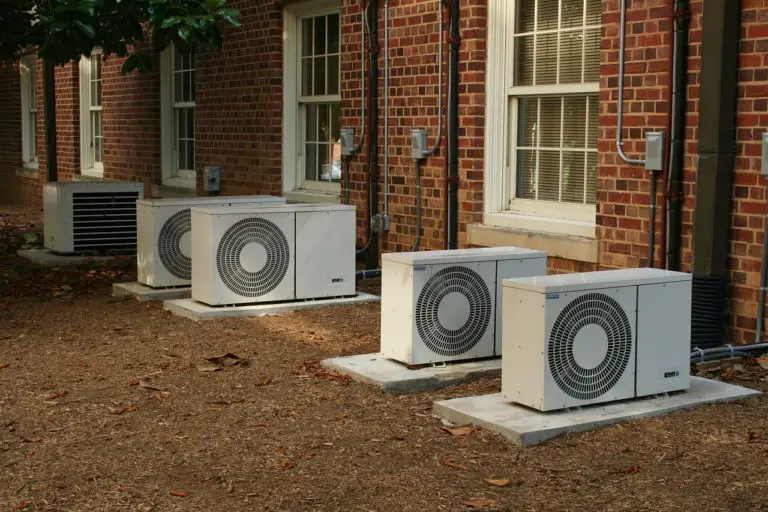
Cooling systems lower temperatures by removing heat. First, a cooling unit, such as an air conditioner or an evaporative cooler, draws in outside air. Next, the unit removes the heat. Different kinds of units do this differently. Some use chemical refrigerants to cool the air. Others cool the water using evaporation. Finally, the system distributes the cool air inside.
Many North American homes have central “all air” cooling systems. Alternately, your home may rely on individual air conditioning units in specific rooms. Your HVAC equipment may also include an evaporator or dehumidifier for removing excess humidity from the air.
7 Steps Toward an Energy Efficient HVAC System
The first step toward an energy efficient HVAC system is finding the problems. Second, it’s important to keep your system in good repair. Finally, replace or update any HVAC equipment as needed.
Step 1: Perform an Energy Audit
An audit means an inspection of your HVAC equipment to make sure every HVAC unit is in good repair. The Department of Energy has an easy to understand guide to carrying out your own audit. Also, they recommend paying for a professional energy assessment to catch anything you might have missed. The DOE recommends doing a self-inspection every year and focusing on insulation and leaks in ducts. A professional inspector will have numerous special tools at their disposal to analyze your HVAC system more closely. They may perform a blower door test and a thermographic scan. In addition, the examiner will look at your past utility bills. You can learn more about specific tools and assessments at the DOE website.
Step 2: Inspect Your Weatherproofing
Even the most energy-efficient HVAC will cost you unnecessary money if your weatherproofing isn’t up to snuff. Getting rid of drafts can cut your energy consumption by ten to twenty percent, says the Department of Energy. Gaps along baseboards or the edges of flooring can cause air leaks. So can gaps where the walls and ceiling meet. Also, you should check for outdoor leaks. Common spots for air leaks include windows, doors, lighting, plumbing fixtures, switches, and electrical outlets. Check the DOE’s special leak detection page for further details. Apply weatherstripping where needed.
Step 3: Install a Programmable Thermostat
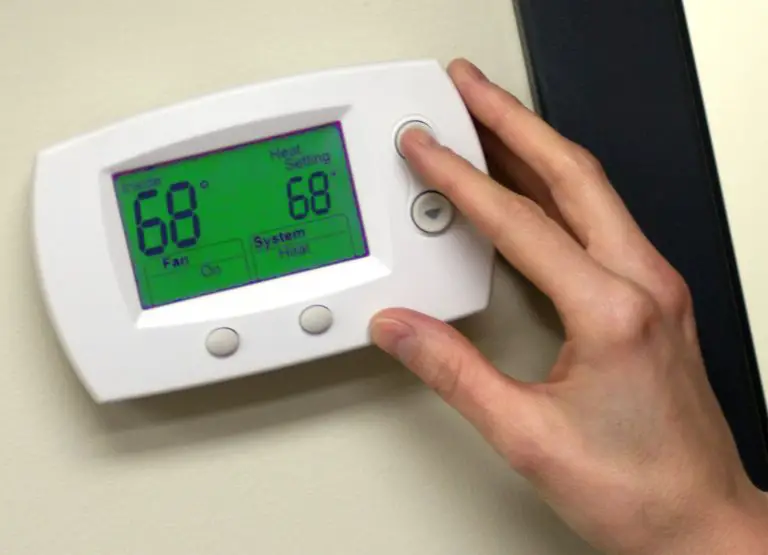
A thermostat lets you tell your HVAC system when to turn on heating and cooling. A programmable thermostat allows you to set an HVAC schedule. As a result, according to the Department of Energy, you could save as much as ten percent on heating and cooling, by turning your HVAC settings to low — or even off — when you’re asleep or out of the house. This will give you a more energy efficient HVAC system, and lower energy bills.
Step 4: Clean and Change Air Filters Regularly
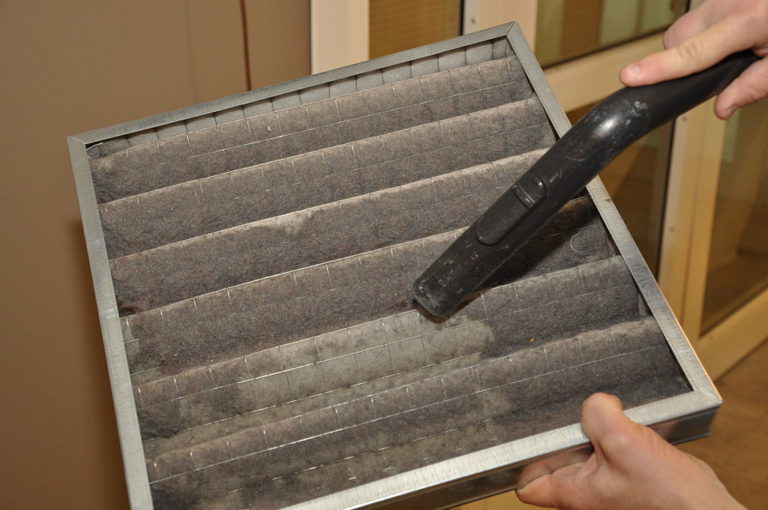
Dirty air filters block the airflow through your system. As a result, the system becomes less efficient. A less energy efficient HVAC system uses more energy than an efficient one. You should check your air filters for debris every month. If you can’t see light passing through your filter, you should consider cleaning it, or even changing it, even if it hasn’t been very long.
You can clean your air conditioning unit filters yourself, and it’s a pretty easy job. First, you can use a vacuum to get rid of dust and grime. Next, you can sanitize the filter by submerging it in a solution of equal parts water and vinegar. Let them soak for one to four hours, depending on how long it has been since the last cleaning. Finally, place the filters on a towel and let them dry before putting them back in your unit. Do It Yourself.com has step by step instructions if you want to give this a try.
With proper care, good air filters can last 60 to 90 days. Some last up to a year. But you should inspect them once a month, and change them sooner than that if necessary. The Department of Energy recommends changing the air filters for each HVAC unit every few months, especially in times of high use.
Step 5: Clean the Coils on Your Air Conditioning Unit

The fan in an outdoor HVAC unit pulls warm air in and over the coils. It also pulls in dirt and debris. First, keep your coils clean by regularly clearing debris from the outside of the unit. Do this once a week. In addition, try to keep any trees, plants, grasses, etc., at least two feet away from your system. Finally, when you do clean the coils, cut off the power to your HVAC unit and vacuum the outside fins with a soft bristle attachment. You can also clean your unit with a hose, as shown above. WikiHow has a step by step guide to cleaning the coils on your HVAC unit. If you think your unit may need more specific attention than you can give it, you can also schedule a servicing from an HVAC professional.
Step 6: Check Ducts and Registers
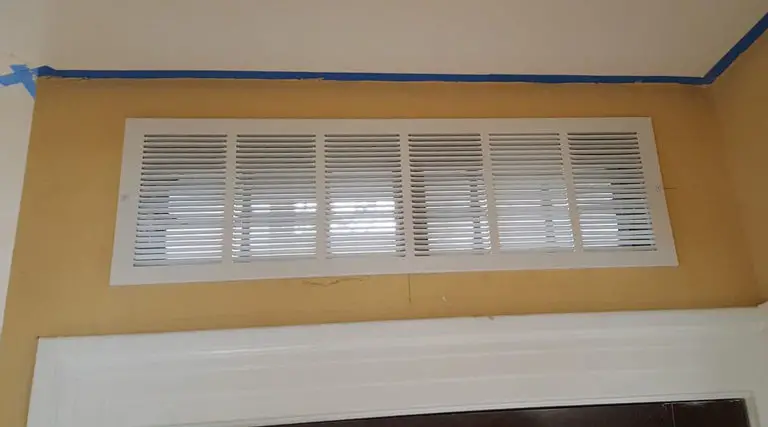
Ducts are the pathways that bring hot and cool air from the source to the rest of the house. Registers are the grills that sit over the mouths of the ducts. Sometimes dust gathers in the registers and ducts. When this happens, the airflow diminishes, and with it your system’s energy efficiency. Check the registers regularly. When you see dust accumulating, vacuum the registers. In addition, look for holes in your visible ductwork, as well as gaps between duct connections. These gaps create air leaks. Plug any holes that you find and seal duct connections to make your HVAC system run as efficiently as possible.
Step 7: Replace HVAC Equipment if it’s More than 15 Years Old
Of course even the best care can only take you so far. Eventually there will come a point when you will need to replace your HVAC equipment. The Department of Energy recommends at least every fifteen years. When that time comes, consider replacing your system with an energy efficient HVAC system.
Energy Efficient HVAC Equipment
The website for the U.S. Government’s Energy Star program has information about energy efficient HVAC products that you can buy. In addition, they have tips for installing your new equipment. They also have guides to making your home as energy efficient as possible, and tips for finding a contractor, if you need one.
In Conclusion
Keeping an energy efficient home will save you money, and will save energy. This is good both for you and for the environment. The center of any energy efficiency plan is an energy efficient HVAC system. The good news is, maximizing energy efficiency is within your control.
Featured Image: CC by 2.0, by Corgi Home Plan, via Flickr

